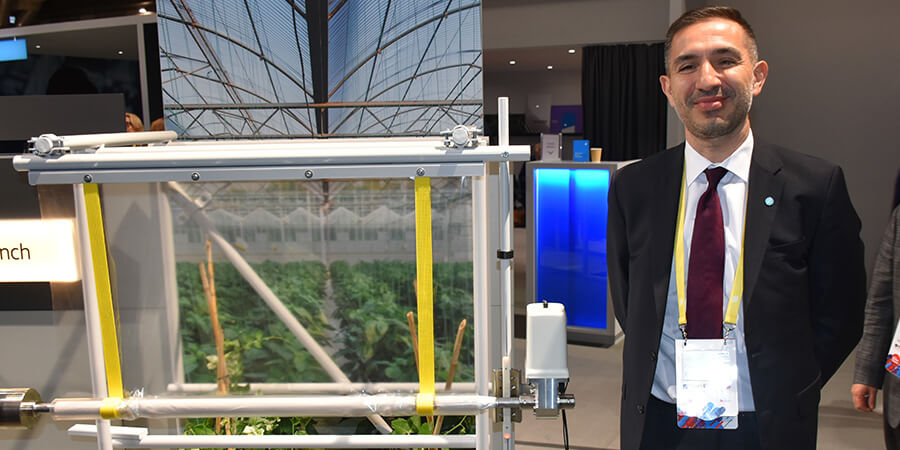Internet of Things (IoT) was once again a top theme of Mobile World Congress this year. IoT is now becoming a reality thanks to pervasive telecom networks built on 3GPP standards. There are many use cases for IoT, including applications for sustainability development. Ericsson showcased a number of applications at its booth that demonstrate how IoT can be leveraged for sustainability.
Ericsson is confident that mobile networks can support many different types of scenarios for IoT. The company showcased demonstrations related to massive IoT connectivity where large volumes of sensors are deployed, and also mission critical scenarios where fewer sensors are deployed but require high bandwidth and low latency. All of these use cases can be supported by pervasive telecom networks that have scale and allow IoT to become a reality.
"We are showing applications related to this at our booth here at Mobile World Congress this year," Alp Uysal, Ericsson's Head of Strategy, Technology and Sustainability, Middle East and Africa, told Telecom Review. "Ericsson has a full section dedicated to sustainability at our booth. Sustainability is very important to us because of the way that it impacts society. Our mission at Ericsson is to innovate technology for good."
The section that Ericsson had for IoT showcased four different use cases related to how IoT can have a positive impact on sustainability. One of the use cases showcased at the company's booth was an early warning system for landslides that Ericsson produced with Chinese telecom provider China Mobile. Landslides are a big problem in China, so to prevent road closures and save lives Ericsson is deploying a system using IoT sensors in soil.
Another use case displayed at Ericsson's booth was smart metering devices for areas such as gas, electricity and water, using IoT connectivity. These meters can be controlled and also be analyzed to make sure they are being used to maximum efficiency. This is what water and energy conservation is all about.
In addition to this, Ericsson showcased a smart agricultural irrigation demonstration with Turkish telecom provider Turkcell. It's an irrigation unit that is completely monitored, controlled, and doesn't require any human intervention. Humidity sensors are deployed in soil that can sense how much water is needed for a certain area.
Finally, Ericsson showcased a demonstration with Japanese telecom provider SoftBank - another agricultural application that uses sensors that measure humidity and heat inside a greenhouse. The air flow into the greenhouse is controlled automatically to make sure that the temperature and humidity is optimal for the plant life located inside.
Uysal also touted an IoT sustainability project Ericsson is currently testing in Rwanda. It's a micro-weather application that could be introduced to other areas in Africa, the Middle East, and the rest of the world.
"The microwave links that operators already have in their networks to carry backhaul traffic collect a lot of valuable information," he explained. "Because of clouds passing by or humidity in the air, there is a slight loss in signal. This allows us to treat these microwave links as mini weather stations."
This is extremely valuable information for farmers who need to make the most of their precious land. It could be a great solution to droughts that harm local people tending farmland in areas of the world where resources are slim.











